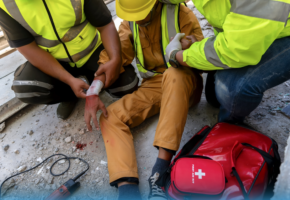Erb’s Palsy Lawsuit Alleges Improper Training And Techniques
A plaintiff from Hampton County, South Carolina is suing Allendale County Hospital midwife Amy M. Loughlin and physician Dr. Janet McKissick for nerve damage his son sustained during the birthing process. The Erb’s Palsy lawsuit was first filed on January 4, 2013, but has been stalled by several changes in judges and attorneys over the past several months. Now it looks like the lawsuit is moving forward again, but it is never an easy fight when one is going up against a major medical company.
Erb’s Palsy lawsuit details
The plaintiff’s wife was admitted to Allendale County Hospital on July 9, 2002. The Erb’s Palsy lawsuit claims that the defendants were “negligent, reckless, willful, wanton and/or otherwise wrongful” in their care of the mother and baby. The complaint contends that staff members were not properly trained in how to handle shoulder dystocia complications, which resulted in the newborn’s Erb’s Palsy birth injury.
What is shoulder dystocia?
Shoulder dystocia is one of the most frightening emergencies in the delivery room, according to American Family Physician. When maneuvers to get the baby into proper birthing position have failed, the baby’s shoulder sometimes hits against the pubic bone, which can cause post-partum hemorrhaging and fourth-degree lacerations in the mother and palsy or permanent disability in the baby. Fewer than 10% of babies born with palsies suffer long-term effects, but the most common cause of fetal injury is the improper use of a vacuum extractor or forceps during delivery.
Can Erb’s Palsy be prevented?
There are several things a doctor can do to relieve shoulder dystocia, without injury to mother or baby, according to American Family Physician. Positioning of the baby known as the “McRoberts Maneuver” is believed to relieve more than 40 percent of all cases. When combined with another method known as “Suprapubic Pressure,” it can relieve a good 50 percent of shoulder dystocias. In some cases, when infants are particularly large, the mother’s birthing canal is particularly small, or when gestational diabetes is a factor, a c-section may be recommended to lower the risk of shoulder dystocia and Erb’s Palsy.
What is the family suing for?
The Erb’s Palsy lawsuit maintains that the medical staff did not communicate the patient’s condition or respond appropriately to shoulder dystocia. The complaint further states that improper techniques and excessive force were used in the delivery of the baby. The infant’s father is suing for adverse effects on the baby’s musculoskeletal system, past and future medical expenses, permanent impairments and disability, disfigurement, physical pain and suffering, mental and emotional harm, loss of future employability and earnings, loss of enjoyment of life, and further damages discovered in the case.
What a New York birth injury lawyer can do for you
If you feel you have been the victim of medical malpractice, you can discuss your confidential case with a New York birth injury lawyer to see if you might have a strong enough lawsuit to win. If a lawyer takes on your case, a small portion of your award will cover the attorney’s cost. If you do not win the lawsuit, you owe nothing in payment. Contact The Sanders Firm at 1-800 FAIR PLAY for a free, no-obligation case evaluation. Resources
- American Family Physician – Shoulder Dystocia, http://www.aafp.org/afp/2004/0401/p1707.html




